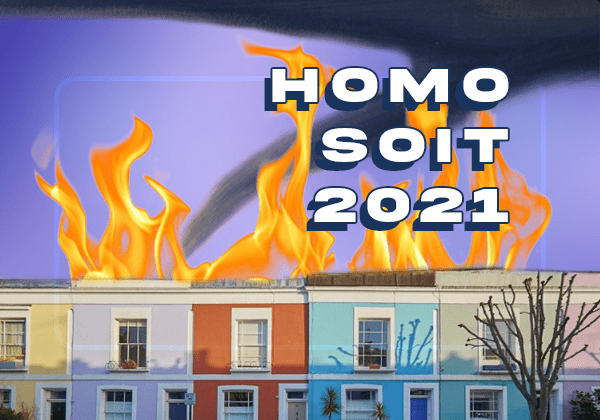In the face of accelerating climate change, Australia is experiencing natural disasters of increasing scale and frequency. Over the last few years, Sydney has been hit by massive flooding and veiled in smoke from the traumatic 2019-20 Black Summer megafires. Coverage and discourse about these disasters has a marked emphasis on their national and international scale: their impacts on the national psyche, the sense that we are ‘all in this together’, ruminations on our collective response to disaster. In the midst of this rhetoric, it is easy to lose sight of the individuals who experience disaster and the particularities of how they are affected. Indeed, it might seem divisive or trivial to pay too much attention to the ways in which identity intersects with natural disaster.
Nonetheless, the field of disaster studies is increasingly attentive to questions of identity. In these high stress scenarios, people are facing what can literally be a matter of life and death. People are displaced, whether temporarily or permanently. They lose homes and possessions. In this already emotionally intense environment, dynamics of social inclusion and disadvantage can compound the immediate impacts of the disaster. As a result, we need to interrogate how queer people are affected by natural disasters.
One of the main challenges that queer people may encounter during disasters is displacement and a sense of dislocation. Our homes provide safety in privacy, a place to safely express gender and sexuality, a place free from violence and discrimination, a site where important supplies like binders or prescriptions might be kept. During disasters, queer people are evacuated from these safe spaces and face the trauma of loss and damage to their property. After the 2011 Queensland floods, a survey conducted by the Queensland Association for Healthy Communities (QAHC) found significant fear and anxiety attached to being displaced during the floods. In some instances, people were forced to evacuate to conservative family homes and conceal their identities. In others, respondents expressed concern about having strangers enter their home as part of the disaster response.
This harm is compounded by exclusionary and sometimes outright hostile institutions involved in disaster response. Unfortunately, queer people cannot always trust that they will be treated respectfully by emergency services, support services and the public. Structural violence is embedded in the institutions and processes which are meant to protect those affected by disasters. Looking abroad reveals a grim example: research following Hurricane Katrina in New Orleans found that queer families were systematically excluded from social support. Lesbian mothers reported self-describing as sisters so that caseworkers would understand their relationship. The queer community observed that the Federal Emergency Management Agency (FEMA) seemed to prioritise service delivery to two-parent heterosexual families over those with single parents or people who were unmarried. Heteronormativity directly locked out queer families from receiving vital support.
The QAHC study also illustrated the paucity of emergency services for queer people after the 2011 Brisbane floods. More than half of the respondents described feeling anxiety regarding their safety with emergency workers or in emergency evacuation shelters. They pointed to concerns that they would be misgendered or have their relationship invalidated by mainstream support services.
A 2018 report commissioned by the Victorian Government into the experiences of LGBTI+ people during disasters in Victoria found that queer people anticipated bias and discrimination from services providers. They also surveyed emergency management organisations, finding that specific training on LGBTI+ issues was rare. While many employees were open to accommodating queer people in their emergency management practices, narratives that best practice involved ‘treating everyone the same’ were common, and outright hostility was also present.
The outsourcing of disaster response services to religious organisations worsens discrimination. Christian institutions like the Salvation Army, Anglicare and the Seventh Day Adventist Church are tasked with managing evacuation centres and distributing supplies. These same organisations have waged campaigns to maintain religious exemptions to anti-discrimination law which lock queer people out of disaster support and deter them from seeking it in the first place.
Narratives surrounding natural disasters and disaster management can often be harmful to queer people. Religious narratives continue to frame disaster as a punishment for sin, and the pressure placed upon communities in times of disaster can result in more visceral homophobia and exclusion. Many queer people report experiencing violence in the aftermath of disasters. Imagery about the family, rescue triage and heroism is reliably heteronormative and gendered.
Natural disasters are a perfect storm of physical stressors and social vulnerability. For disaster management to be inclusive, it must actively consider and involve queer people in policy development. It isn’t good enough that queer people must fear bias and discrimination during intensely difficult moments of their lives. It is unacceptable that the people they turn to for help may be actively invested in their oppression.
Disasters are not just moments of vulnerability, but opportunities for resilience. Queer people have, for centuries, developed systems of resilience: they have formed communities, created networks of mutual aid, and filled gaps in service provision. Including queer people in the design of disaster responses and recovery is both commonsense and essential for their survival.





